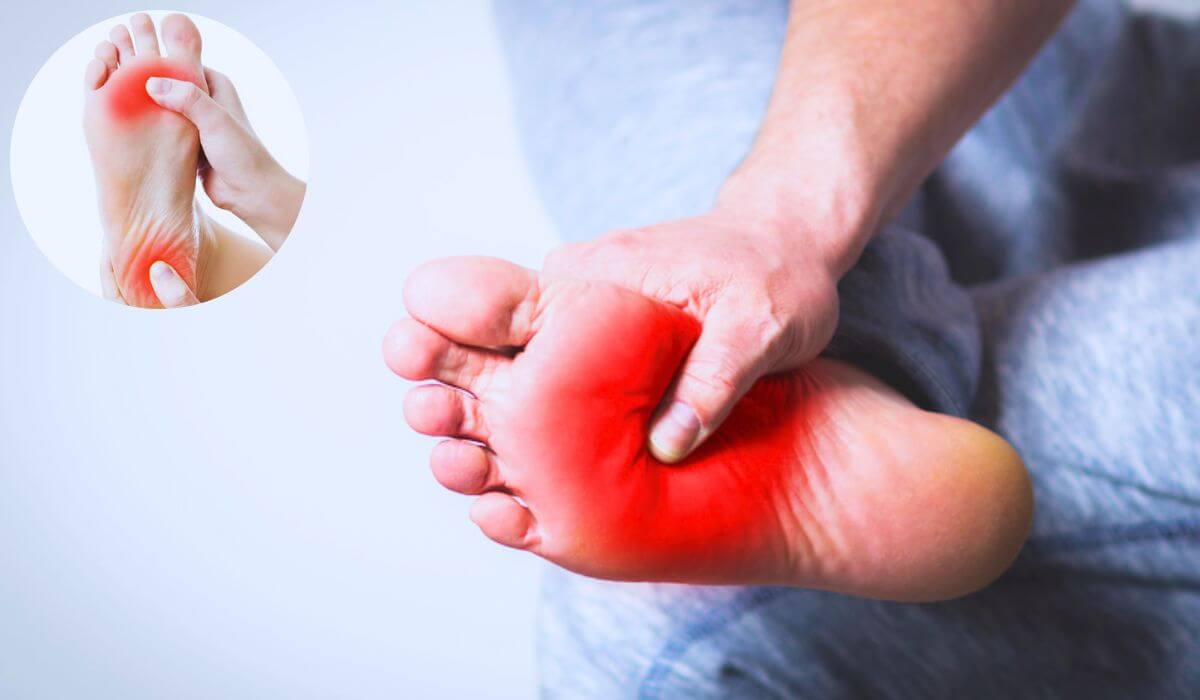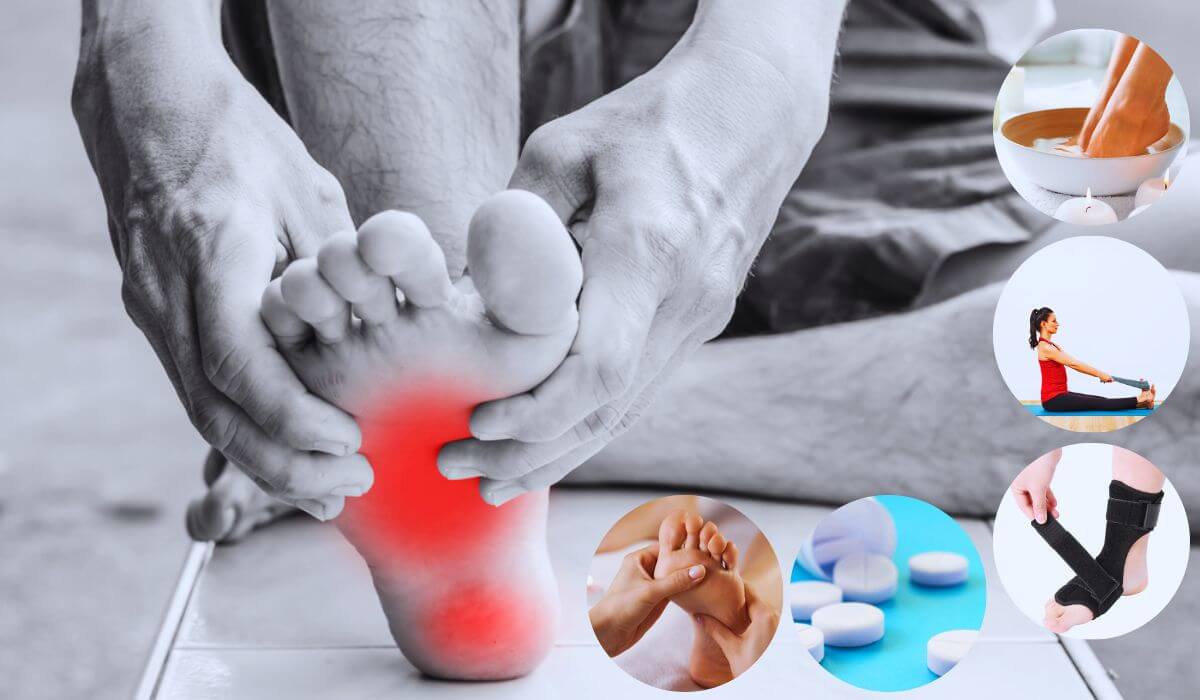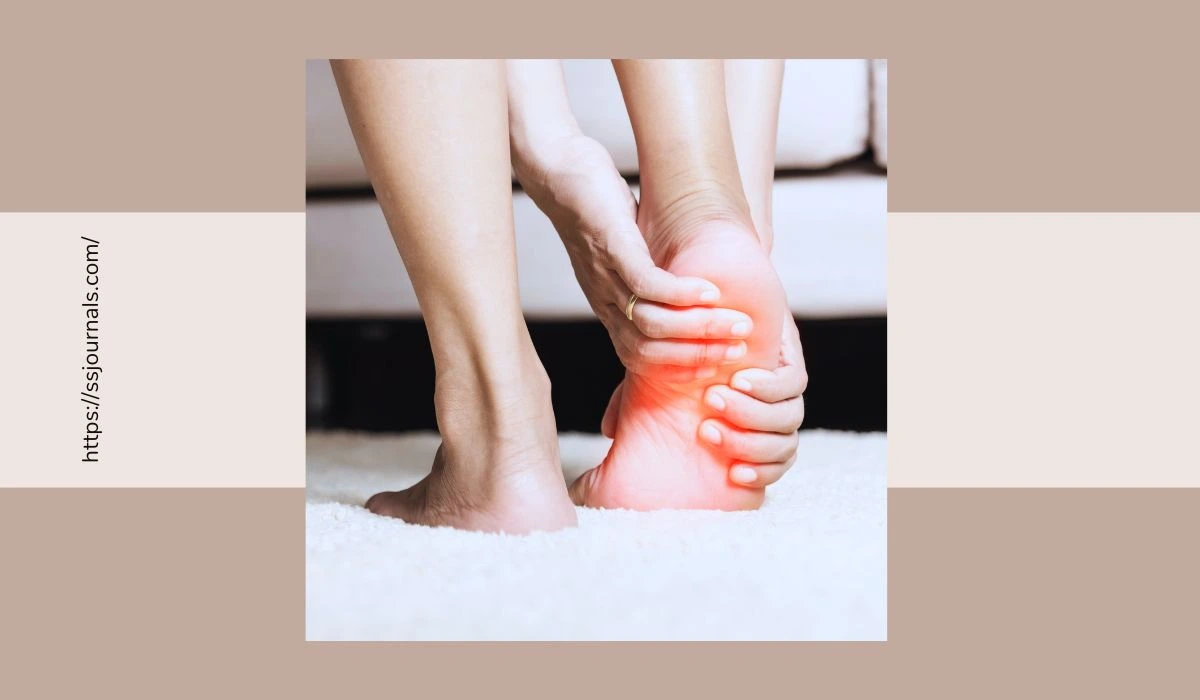Ever wondered why your foot hurts occasionally? Sometimes you feel the pain under your toes, and sometimes it can be on the heels. Whatever the case, foot pain is a serious issue and needs to be addressed properly.
In this article, we will be discussing some possible causes of the pain in the bottom of the foot. And following that, we will provide you with some solutions to relieve the pain. So, dive into the article and learn how to alleviate the pain in the bottom of the foot!
What Are The Causes Of Pain In The Bottom Of The Foot?
There are 26 bones, 30 joints, and around 100 muscles and ligaments in each of your feet. The complexity of the structure of the foot itself makes it difficult to understand the various reasons that lead to foot pain.

Several problems can cause a variety of pains in the bottom of the foot. Check out the causes listed below:
- Plantar Fasciitis
Plantar fascia is a thick band of tissue that connects the bottom of your foot to the heel bones and toes. When this part is affected by inflammation, it is called plantar fasciitis.
When you are affected by it, you might feel a stabbing pain near the heel. Some factors such as being overweight, aging, walking barefoot, having flat feet, etc can raise the risk of plantar fasciitis.
- Metatarsalgia
This is one of the most common causes of pain in the bottom of the foot. Metatarsalgia affects the metatarsals, which are the bones that connect your ankles to the toes. The pain is usually experienced on the ball of your foot.
Around 80% of people are affected with metatarsalgia at one point or another in their lifetime. Some of the risk factors that raise the chance of getting affected by metatarsalgia include: having diabetes, being overweight, having hammertoes, playing high-impact sports, etc.
- Peripheral Neuropathy
This is a nerve pain that affects the peripheral nerves. Your brain and spinal cord send nerve impulses via these pathways to reach the rest of your body.
Peripheral neuropathy can affect your legs, arms, feet, hands, face, mouth, and internal organs. Certain chronic conditions such as diabetes, Lyme disease, alcohol misuse, etc can cause this condition.
- Neuroma
These are non-cancerous tumor growth that often causes swelling between your toes. Frequently wearing high heels and being involved in high-impact sports can raise the risk factors of a neuroma. It often feels like you have a pebble inside your shoes.
- Sesamoiditis Or Sesamoid Stress Fracture
Sesamoiditis is caused by an injury to the sesamoid bones on your foot. These bones are placed at the base of the big toe.
The symptoms are characterized by recurring pain in the ball of the foot. When the pain gets severe, it is called a sesamoid stress fracture.
Along with these some rare factors that cause pain on the bottom of the foot are Tarsal Tunnel Syndrome, Guillain-Barre Syndrome (GBS), Achilles tendinitis, etc.
How To Treat The Pain In The Bottom Of The Foot?
By following certain home remedies, you can relieve some of the pain in the bottom of the foot. But if the symptoms are severe, it might be an indication of a hidden and serious condition.

Make sure to consult a physician if you are experiencing serious symptoms. Here are some of the ways to relieve pain in the bottom of your foot:
- Do A Foot Bath
One of the easiest and most effective ways to relieve pain in the bottom of the foot is to do a foot bath. You can make some warm water and add some Epsom salt to it. Putting your feet in the water can reduce swelling and relieve you from sore feet.
- Try Some Strengthening Exercises
The pain in the bottom of the foot can be relieved by practicing some strengthening exercises. You can simply practice walking or jogging to flex the muscles in your feet. Or try some resistance exercises such as Achilles stretch to flex the muscles on your feet.
- Massage Your Foot
Simply getting a foot massage can help to relieve the pain in the bottom of the foot. You can use some lotion or oil to massage and gently apply pressure on the feet.
- Go For Pain Relievers
If the foot pain is severe, you can use some Nonsteroid anti-inflammatory drugs (NSAIDs). They can be effective in relieving pain and swelling.
- Use Orthotic Devices
Certain orthotic devices such as custom-made shoes can provide relief for the pain in the bottom of the feet. You can use a wearable splint and walking boot for relieving the foot pain.
When To See A Medical Professional?
Using certain home remedies to treat pain on the bottom of the foot can be effective if symptoms are mild. But when symptoms are severe, it is necessary to consult a medical professional. If you have the symptoms mentioned below, consult your doctor immediately:
- Having fever-like symptoms along with foot pain
- Extreme swelling along with numbness under the feet
- Open wounds and sores that might get infected
- Unable to stand or walk with feet’s
- Swelling and pain that prolong for days or weeks
- Unable to relieve pain using home remedies.
Pain in the bottom of the foot is a common condition that affects many people. Having a complex structure, the feet can have many causes of pain.
These causes depend on the point of pain in your feet. By adhering to certain home remedies and using painkillers, some of these pains can be relieved. But if you have symptoms that prolong for days, it is ideal to consult a medical practitioner.

